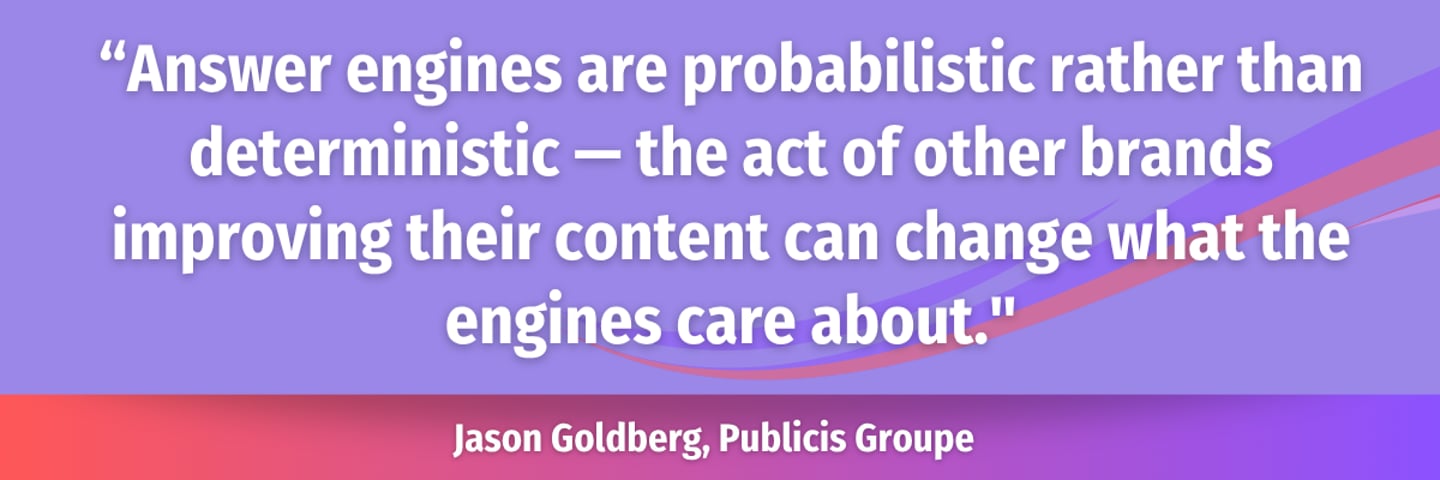How to Transform Product Data for the AI Shopping Era
AI tools such as ChatGPT and Google Gemini are embedded into daily life, and now agentic models are driving the next wave of retail disruption by diving deep into consumer motivations and shopping patterns — even making purchasing decisions for them.
This shift to agentic commerce could potentially represent a $900 billion to $1 trillion opportunity in U.S. retail alone by 2030, according to McKinsey & Co.
Soon, these agents may turn from simple conversational chatbots — for everything from grocery shopping to trip planning — to proactive purchasers that go beyond traditional search or site browsing.
Also: Walmart ushers in "agentic commerce" through OpenAI partnership
This change presents both challenges and opportunities for consumer goods companies and retailers, requiring them to focus not only on consumers, but also on the algorithms that parse through digital product information to influence what items people view and ultimately buy.
The Rise of AI-Driven Shopping
There is a shift from simply searching online to a more relationship-focused experience. When using an agent, it can better help the consumer by referencing their purchase history, brand metadata and reviews to provide tailored, relevant suggestions.
“Unlike the search engine era, answer engines like ChatGPT have 'memory' — once you tell it your size information (or any other product preferences, allergies, all that information), it knows without you saying it all the time,” says Scot Wingo, CEO of ReFiBuy. In his view, this creates a sort of hyper-personalized loop that allows brands, the algorithm and the consumer to develop together.
But optimizing for these systems isn’t as simple as it appears, says Jason Goldberg, chief commerce strategy officer at Publicis Groupe. “Answer engines are probabilistic rather than deterministic — the act of other brands improving their content can change what the engines care about."
As large language models learn from new data, what an algorithm values today, like reviews, imagery and product information, could change tomorrow, which will challenge brands to develop flexible product information that can adapt during this process.
Machine Customers
Gartner forecasts that by 2030, at least 25% of all purchasing decisions will be made by machines. In a recent report, Gartner identified AI-driven buyers as autonomous customers, making purchases based on rules, data and optimization rather than emotional appeal, meaning algorithms need to be convinced into decisions.
This will result in a shift in how products are marketed, which usually depend on brand storytelling or an emotional connection to generate interest. Now, machine discoverability will play a role, as algorithms will better understand, trust and endorse products.
The Algorithm
Experts agree on the importance of well-structured, accurate and contextual data for the algorithm.
“Answer engines want many more attributes; they want those attributes to be structured, and they want them to be consistently accurate,” says Goldberg.
However, this doesn’t mean fundamentals don’t matter.
More: Buffalo Games gets PIM upgrade to meet AI shopping moment
In Profitero’s analysis of Amazon’s Rufus AI, the company discovered that products with four stars or more and over 9,000 reviews mainly appear in recommendations, while items with few reviews rarely show up.
What About Humans?
With the emergence of these machine customers, Forrester warns against neglecting the human consumer in the process. In a recent blog post, Forrester noted that, even as businesses race to implement these new systems, many consumers are either unfamiliar with or uneasy about AI agents making autonomous decisions for them.
This means consumers will need to prioritize trust and transparency in agentic commerce, ensuring they feel comfortable working with AI agents and clearly understanding how these recommendations are generated.
Black commented that, “Brands shouldn’t view creative content and machine-optimized content as an either/or tradeoff — it’s about balance. Machine-optimized content ensures products are discoverable by algorithms and AI assistants through structured data, metadata and keyword-rich copy. Creative content, on the other hand, builds emotional connection, brand equity and conversion once the shopper lands on the page.”
Goldberg agreed. “Agentic optimization isn’t about gaming the system or selling to robots instead of humans … it’s about serving humans more effectively through relevance and context sensitivity.”
Also: Don’t mistake rebranded chatbots for true agentic AI, Gartner warns
How Do Brands Compete?
For a brand to compete in an AI-driven marketplace, it must rethink how it organizes, measures and communicates product information.
Brands can begin by organizing data for algorithms, making sure each SKU has consistent attributes and well-defined use cases. Wingo notes that even small additions, such as a scent profile for beauty products, can boost discoverability.
Brands also need to integrate real-time data, with Gartner predicting that marketplaces and answer engines will soon need direct catalog feeds and live inventory updates.
The brand voice also needs to stay consistent, with the context still reflecting brand values that need to be encoded in both metadata and content. Additionally, it should include a human element. AI agents can recommend, but consumers still make the purchase. Focusing on a smooth transition from chat to checkout will be critical to maintaining consumer trust.
With Gartner calling machine customers “the biggest new growth opportunity of the decade” and McKinsey stating it is “the new era of digital commerce,” brands will need to place greater emphasis on human-agent interactions to maintain sales growth and brand loyalty.
Consumers won’t stop shopping in the coming years, but they may start to trust outsourcing the process. The brands that win this battle won’t worry about where their products are placed in the aisles or on Google’s first page, but will focus on this new digital shelf space shaped by algorithms.
“The best approach is to create a modular content strategy that serves both needs: structured for machines, compelling for humans,” said Black. “This way, brands maximize visibility while still delivering the storytelling that drives preference and loyalty.”








